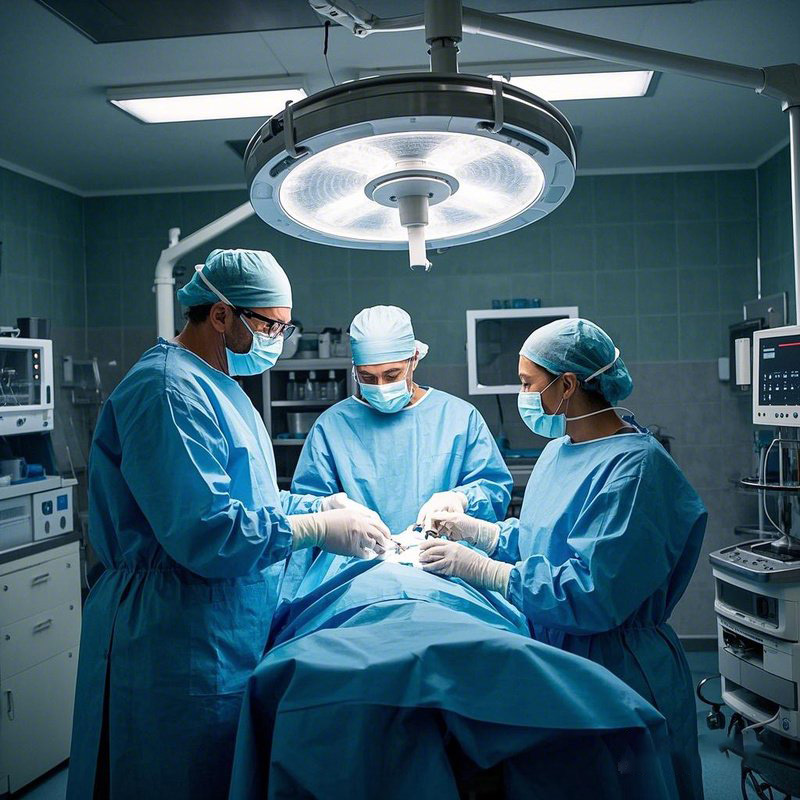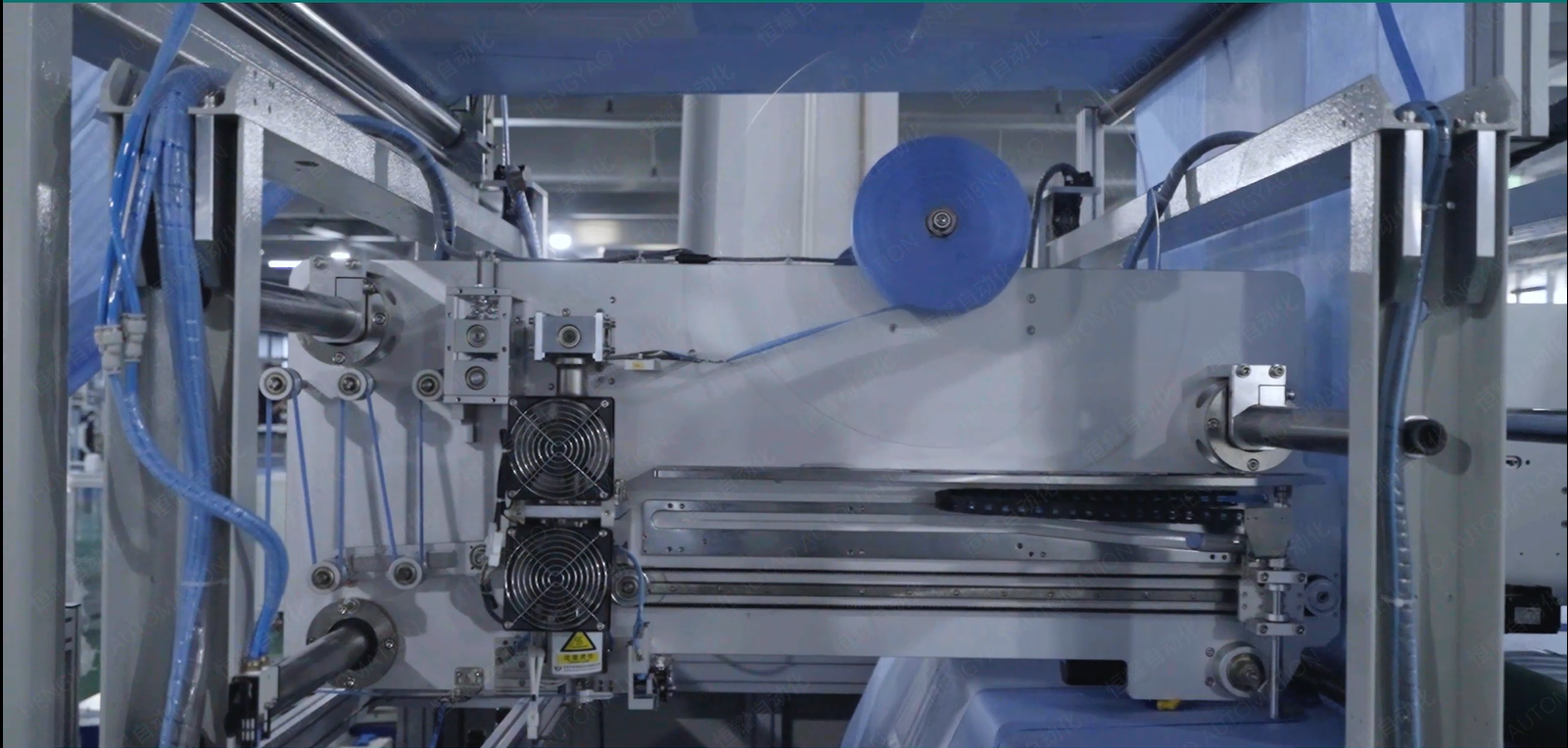The Evolution of Surgical Gowns: From Cotton to Smart Manufacturing: A Medical Revolution
Source:https://www.sinvta.comDate:2025-10-10
In the operating room, a seemingly ordinary surgical gown carries not only the doctor's responsibility but also a century-long history of medical technological evolution. From the initial repeatedly starched cotton cloth to today's fully automated disposable non-woven fabric, the evolution of surgical gown materials reflects not only technological progress but also humanity's determination to fight infection and protect lives.

First Generation: The Cotton Era—The Risks of Reuse
In the early 20th century, surgical gowns were mostly made of cotton. This natural fiber is moisture-wicking and breathable, but it harbors a fatal flaw: cotton fibers loosen after repeated washing, making them highly susceptible to bacteria and bodily fluids. To make matters worse, sterilization technology at the time was limited, and high-temperature and high-pressure sterilization often caused cotton to shrink and deform, significantly reducing its protective properties. Statistics show that before the 1950s, postoperative infection rates were as high as 10%-15%, largely due to the limitations of cotton gowns.
Pain Points Summary: Easy permeability, difficulty in sterilization, and a short lifespan created "invisible loopholes" in infection control.
Second Generation: Polyester—Durable but "Unfriendly"
In the 1960s, polyester fiber came to the fore. This synthetic material is wrinkle-resistant and wear-resistant, can withstand high-intensity disinfection, and has a lifespan far exceeding that of cotton. However, polyester's shortcomings soon became apparent: poor breathability caused doctors to feel stuffy and uncomfortable, and static electricity attracted dust and microorganisms, even potentially igniting flammable gases in the operating room. Despite improvements in protective performance, achieving both comfort and safety remains challenging.
Turning Point: The medical community began to realize that simply pursuing durability wasn't the optimal solution, and the concept of "disposable" gradually took hold.
The Third Revolution: Nonwoven Composites—The "Gold Standard" of Medical Protection
In the early 21st century, the widespread adoption of nonwoven surgical gowns completely changed the game. Through processes like polypropylene meltblowing and spunbonding, nonwovens achieved three breakthroughs:
Barrier Performance: Multi-layer composites can block the penetration of blood and bodily fluids (passing over 99% of the ASTM F1671 standard);
Lightweight: Weighing only one-third of traditional materials, reducing the burden on doctors;
Sterility: Disposable gowns eliminate cross-infection, reducing postoperative infection rates to below 1%.
Data Confirmation: A US CDC study shows that the risk of surgical site infection (SSI) is reduced by 40% with the use of disposable nonwoven surgical gowns. Intelligent Production: A Double Revolution in Efficiency and Standards
If material iteration is "evolution," then fully automated production represents a "qualitative leap." In modern smart factories:
Unmanned workshops: From raw materials to finished products, robotic arms and AI-powered quality inspection systems operate 24/7, with a single production line producing over 100,000 pieces per day.
Zero defect rate: Optical sensors monitor pore size and thickness in real time, ensuring each surgical gown meets AAMI Level 3-4 protection standards.
Environmentally friendly upgrades: Biodegradable PLA material and a glue-free process ensure both safety and sustainability.
Efficiency comparison: A traditional sewing workshop produces 200 pieces per person per day, while a fully automated production line increases efficiency 50 times and reduces costs by 60%.

The Future Has Arrived: The Vision of Smart Surgical Gowns
Today's non-woven surgical gowns are far from finished. IoT chips embedded in the gowns monitor contamination in real time, nano-coatings actively sterilize, and self-healing materials protect against damage... These "black technologies" are brewing in the lab. Underpinning all of this is the medical industry's unwavering pursuit of "zero infection."
Recommended News
-
Exhibition Invitation | Huitong Automation cordially invites you to SINCE 2025 (The 21st Shanghai International Nonwoven Materials Exhibition)
The 21st Shanghai International Nonwoven Materials Exhibition (SINCE2025), a biennial professional exhibition for the nonwoven materials industry.Exhibition Dates: December 3-5, 2025Exhibition Venue: Shanghai World Expo Exhibition & Convention Center, No. 850 Bocheng Road, Pudong New Area, Shanghai, ChinaHall Number: Hall 1Booth Number: 1H20**SINCE 2025:** Don't Miss Out!Top Exhibitors: 300+ renowned companies, providing a one-stop shop for innovative achievements across the entire nonwoven materials chain!Cutting-Edge Insights at the Forum: The SINCE2025 Nonwoven Materials Innovation and Development Forum will be held concurrently. Invited industry leaders, experts, and scholars will provide in-depth analysis and trend predictions on hot topics, helping you grasp market trends and
2025-11-21 08:31:21 -
Leading a new chapter in respiratory protection! HuiTong appears at A+A 2025, exploring the future of respiratory protection automation
From November 4th to 7th, 2025, the 39th International Occupational Safety and Health Exhibition (A+A 2025), a leading global event in the field of occupational safety and health, will grandly open at the Düsseldorf Exhibition Center (Stockumer Kirchstraße 61, 40474 Düsseldorf, Germany). Huitong
2025-10-21 16:20:10 -
Basic knowledge of ultrasonic equipment maintenance
All machines will experience varying degrees of wear during use, and ultrasonic equipment is no exception. So, how should we truly deal with the problem of equipment wear? We should choose suitable lubricants or take appropriate measures to reduce equipment wear. When serious wear occurs, timely maintenance or remedial measures are required to avoid safety accidents.(I) Types of wearThe phenomenon of continuous loss of surface material during the relative movement of objects in contact with each other is called wear. According to the length of wear extension, it can be divided into two categories: natural wear and accident wear.The causes of accident wear are caused by the following factors: defective machine structure, poor quality of parts materials, poor manufacturing and processing of
2025-10-13 14:17:58 -
The Evolution of Surgical Gowns: From Cotton to Smart Manufacturing: A Medical Revolution
In the operating room, a seemingly ordinary surgical gown carries not only the doctor's responsibility but also a century-long history of medical technological evolution. From the initial repeatedly starched cotton cloth to today's fully automated disposable non-woven fabric, the evolution of surgical gown materials reflects not only technological progress but also humanity's determination to fight infection and protect lives.First Generation: The Cotton Era—The Risks of ReuseIn the early 20th century, surgical gowns were mostly made of cotton. This natural fiber is moisture-wicking and breathable, but it harbors a fatal flaw: cotton fibers loosen after repeated washing, making them highly susceptible to bacteria and bodily fluids. To make matters worse, sterilization technolo
2025-10-10 08:02:41








